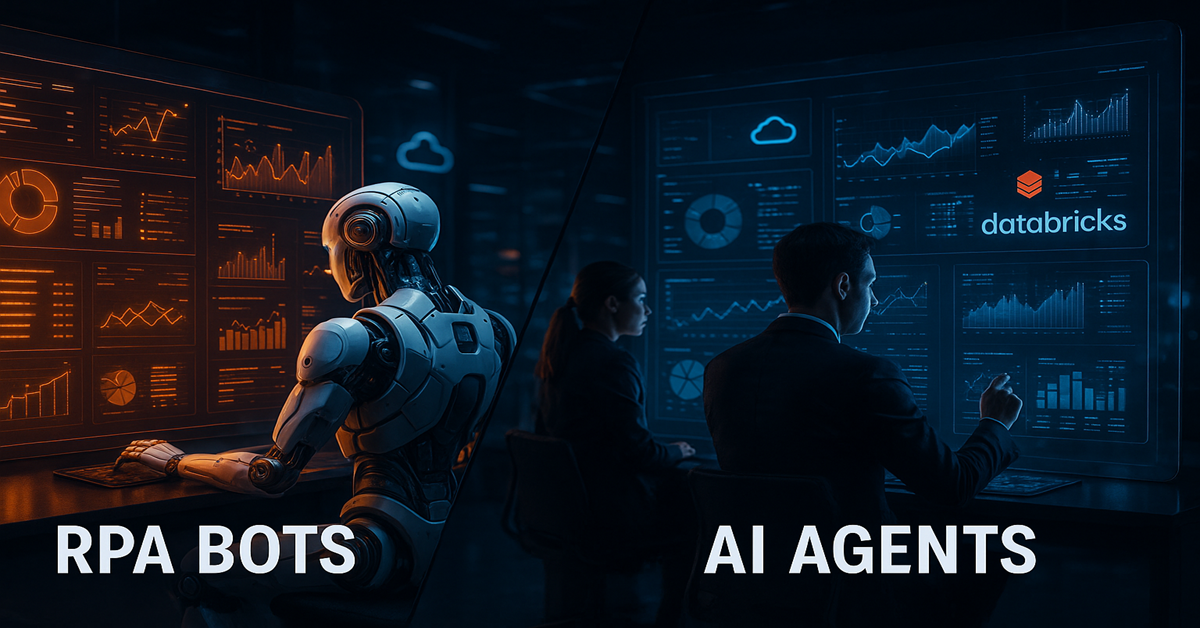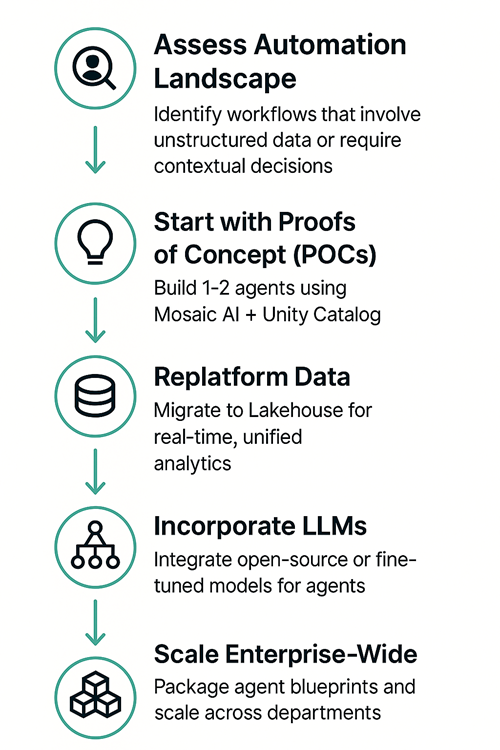Databricks vs RPA: AI-Powered Workflow Transformation

In today’s hyper-competitive, data-driven economy, automation is no longer just a technological upgrade—it’s a strategic imperative. Enterprises across industries are racing to automate workflows, reduce costs, and unlock operational efficiency. Traditionally, Robotic Process Automation (RPA) has led the charge in this domain. But with the explosion of unstructured data, the rise of artificial intelligence, and increasing demand for contextual decision-making, a new paradigm is emerging: Enterprise AI automation, powered by platforms like Databricks.
This post explores how Databricks’ AI-driven automation is reshaping enterprise operations, why traditional RPA falls short in today’s digital world, and how businesses can leverage Databricks consulting services to gain a competitive edge.
1. Introduction: The Automation Mandate
Every enterprise wants to move faster, scale bigger, and make smarter decisions. The problem? Legacy workflows, data silos, and manual operations block progress. Automation promises relief—but not all automation is created equal.
While RPA offers quick wins by mimicking repetitive user actions, it’s fundamentally limited in scope, scalability, and intelligence. AI-driven automation, on the other hand, goes deeper: analyzing data, adapting to context, and powering decision-driven workflows.
Platforms like Databricks make it possible to move beyond RPA’s constraints and build intelligent automation systems capable of reasoning, learning, and generating business value at scale.
2. RPA: Strengths and Limitations
Robotic Process Automation (RPA) emerged as a low-code/no-code solution to automate routine back-office operations. RPA bots replicate human actions by interacting with UIs, extracting structured data, and following pre-set rules.
Strengths of RPA:
- Fast deployment and cost-effective
- Minimal changes to existing systems
- Useful for simple, rule-based tasks (data entry, email triggers)
Limitations of RPA:
- Cannot process unstructured data (PDFs, emails, chat logs)
- RPA can’t learn from new data or adapt over time
- RPA can easily break when user interfaces or APIs change
- Requires complex orchestration to scale
- Poor fit for decision-based, analytics-heavy workflows
RPA served its purpose, but modern enterprises need more flexibility and intelligence.
3. Databricks: The Foundation of Enterprise AI Automation
Databricks, a unified data intelligence platform, empowers businesses to automate intelligently—blending data engineering, machine learning, governance, and LLMs into scalable AI workflows.
With Databricks, enterprises can:
- Automate workflows using structured and unstructured data
- Deploy LLM-powered agents for contextual decision-making
- Build scalable, reusable pipelines across departments
- Govern data usage and access with Unity Catalog
- Train, evaluate, and monitor AI agents using MLflow and Mosaic AI
This represents the next evolution of automation—where insights and outcomes are baked into the process.
Key Databricks Automation Features:
- Mosaic AI Agent Framework: Create reusable, intelligent agents using RAG, tools, memory, evaluators
- Unity Catalog: Built-in data lineage, access control, and auditability
- MLflow Integration: Model tracking, deployment, and performance evaluation
- Delta Live Tables & Lakehouse Architecture: Unified storage and real-time automation pipelines

4. Key Differences: Databricks AI Automation vs RPA
| Feature | Traditional RPA | Databricks AI Automation |
|---|---|---|
| Data Handling | Structured only | Structured, unstructured, real-time |
| Cognitive Ability | None | Yes (LLMs + AI agents) |
| Learning & Adaptation | Static | Dynamic, data-driven learning |
| Governance & Compliance | Manual | Built-in with Unity Catalog |
| Scalability | Limited to bot licenses | Horizontal scale across cloud |
| Use Case Breadth | Task-based workflows | End-to-end decision workflows |
Verdict: RPA handles tasks. Databricks transforms entire business processes with intelligence.
5. Real-World Use Cases
AI Agent for Finance
An LLM-powered agent monitors GL entries, flags anomalies, and auto-generates monthly variance reports—eliminating 80% of manual financial analysis.
Intelligent Customer Support
Agents trained on historical support tickets + product documentation auto-respond to 70% of incoming queries, improving CSAT and reducing cost-to-serve.
Healthcare Claims Automation
AI agents analyze medical codes, eligibility, and claims documents to validate and approve in real-time. Databricks’ scalable infrastructure enables HIPAA-compliant processing.
Legal & Regulatory Compliance
An agent summarizes regulations, scans enterprise policies, and recommends changes for compliance—saving months of legal review effort.
Traditional RPA by itself can’t easily handle these advanced scenarios.

6. Enterprise ROI: Cost vs Value
RPA ROI:
- Short-term gains (~6-9 months)
- Limited to task-based productivity
- High Total Cost of Ownership (TCO) due to bot maintenance and orchestration tools
Databricks AI Automation ROI:
- Compounding returns over time
- Powers analytics, prediction, decision-making
- Reduced data engineering overhead
- Unified platform = reduced tool sprawl
Many enterprises see substantial long-term savings with Databricks AI automation, often outpacing their initial investment
7. Transitioning from RPA to Databricks AI
A gradual transition ensures both stability and scalability. Here’s a recommended roadmap:

8. How Databricks Consulting Accelerates Transformation
Databricks consulting partners play a critical role in delivering value faster. They offer:
- Architecture expertise for Lakehouse and Delta Live pipelines
- LLM selection & fine-tuning for industry-specific agents
- Custom development of agents using the Mosaic AI framework
- Governance setup using Unity Catalog and CI/CD
- Change management & training for enterprise teams
Partnering with certified Databricks consultants reduces risk, accelerates deployment, and ensures best-practice alignment.
9. Final Takeaway
RPA helped enterprises get started with automation. But it wasn’t built for the scale, intelligence, and speed modern enterprises require.
Databricks brings a new era of AI-first automation—one where intelligent agents augment your workforce, adapt to business complexity, and deliver insights in real-time.

FAQ's
1. How does Databricks outperform RPA in intelligent automation?
Databricks leverages AI/ML to handle complex, unstructured data and make contextual decisions—something RPA can't do. While RPA automates repetitive tasks, Databricks enables predictive analytics, real-time insights, and data-driven agents that evolve with usage, delivering long-term automation intelligence.
2. Can Databricks and RPA work together in enterprise automation?
Yes. RPA handles rule-based front-end tasks, while Databricks powers back-end intelligence using big data and AI models. Together, they create smart workflows—RPA triggers actions, Databricks analyzes outcomes—maximizing ROI and minimizing manual intervention across departments.
3. What’s the ROI difference between Databricks AI and traditional RPA?
RPA delivers short-term ROI by reducing manual work, but plateaus with scale. Databricks drives exponential ROI by improving decision accuracy, enabling predictive operations, and unlocking insights from large data sets, leading to smarter, scalable enterprise automation.
4. Is Databricks suitable for automating legacy systems like RPA?
Absolutely. Databricks can integrate with legacy systems via APIs or ETL pipelines, enhancing them with AI insights. It doesn't replace but augments existing RPA, transforming legacy workflows into intelligent, self-improving systems without needing full replatforming.
5. Why are enterprises shifting from RPA to Databricks AI?
Enterprises are shifting due to scalability, flexibility, and intelligence. RPA lacks adaptability to dynamic data and decision-making. Databricks, with AI agents and the Data Intelligence Platform, enables real-time analytics and learning systems that evolve with business needs.

